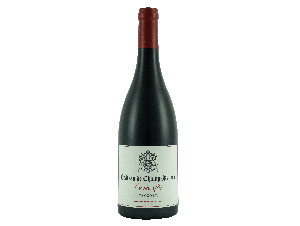You have no items in your shopping cart.
Wine Beaujolais-Villages
The AOC Beaujolais-Villages comes from the AOC Beaujolais and represents one third of its production. The vineyards are located at altitudes of between 190 and 550 metres. The soils are therefore very diverse and the wines each have their own characteristics. Beaujolais-Villages can be red, white or rosé, even if the red dominates the production. Read more on Beaujolais-Villages
-
Top Selling
-
Top Selling
-
Top Selling
- -27%
- -32%
- -21%
- -21%
- -27%
- -27%
Appellation Beaujolais-Villages
The communes of Beaujolais-Villages
To be able to bear the Beaujolais-Villages label, the grapes must be harvested, and the wine made and matured in the following communes:
The communes of the Rhône
Les Ardillats, Beaujeu, Blacé, Cercié, Charentay, Chénas, Chiroubles, Denicé, Emeringes, Fleurie, Juliénas, Jullié, Lancié, Lantignié, Marchampt, Montmelas-Saint-Sorlin, Odenas, Le Perréon, Quincié-en-Beaujolais, Régnié-Durette, Rivolet, Saint-Didier-sur-Beaujeu, Saint-Etienne-des-Oullières, Saint-Etienne-la-Varenne, Saint-Julien, Saint-Lager, Salles-Arbuissonnas-en- Beaujolais, Vaux-en-Beaujolais, Vauxrenard, Villié-Morgon.The communes of Saône-et-Loire
Chânes, La Chapelle-de-Guinchay, Leynes, Pruzilly, Romanèche-Thorins, Saint-Amour-Bellevue, Saint-Symphorien-d'Ancelles, Saint-Vérand.The grape varieties of Beaujolais-Villages
The soils of Beaujolais-Villages were formed by the alteration of primary rocks, mainly granite, but also schist and gneiss, which creates sandy soils. The nature of the soil depends very much on the altitude. The lowest soils contain alluvial deposits which mix with sand, they are clayey-sandy and produce fairly light wines. At mid-slope, the gravel dominates. The wines are a little more powerful than those from the lower slopes. Finally, at the top of the slopes, the soil contains more granitic and volcanic rocks. The soils are considered to be silty-sandy.
The wines from the higher grounds are full-bodied and colourful. The Beaujolais-Villages terroir covers 5316 hectares. 5157 hectares are reserved for red wine, 103 for rosé and only 56 hectares for white. The final annual production is 185,000 hectolitres, of which 2,000 hectolitres are white, 3,000 hectolitres are rosé and 180,000 hectolitres are red. The white Beaujolais-Villages is made from the single grape variety of Chardonnay. The red wine and the rosé wine use the black gamay with white juice as the main grape variety. They can be completed by aligoté, chardonnay, gamay de Bouze, gamay de Chaudenay, melon and pinot gris.
Characteristics of Beaujolais-Villages
The characteristics of Beaujolais-Villages depend on the slopes where the vines have grown. The colour of the red Beaujolais, by far the most produced, is light when the wine comes from granitic sands and is vinified en primeur. When it comes from vines that benefit from a slightly clayey and more schistose soil, it will develop darker tones. Beaujolais-Villages is very fruity. Its nose evokes all the flowers of the fields and the red fruits according to the hillside from which it comes.
Blackcurrant, raspberry and wild strawberry are most often found. For the highest terroirs, we find floral scents that evoke violets and broom. Each year, the wines offer a more exotic flavour, such as banana for example. The mouth of Beaujolais-Villages is particularly supple. It is fine and always fruity. As the wine has little tannin, it allows all the fruitiness to blossom with a longer than average persistence. Beaujolais-Villages is never acidic.
Beaujolais-Villages is wonderful with charcuterie. It is also very generous when served with white meats and poultry. You can serve it with a potato gratin or a cauliflower gratin. The Beaujolais-Villages is always very appreciated at the time of the cheese board. It has a preference for cow's cheese from Auvergne Rhône-Alpes, such as Reblochon, Tomme de Savoie and Beaufort.
Beaujolais et Lyonnais appellations








































 TWIL - Achat de Vin
TWIL - Achat de Vin


